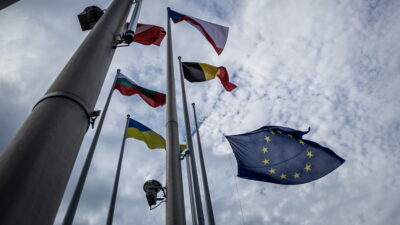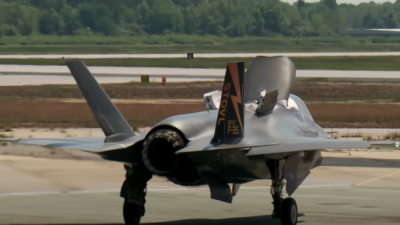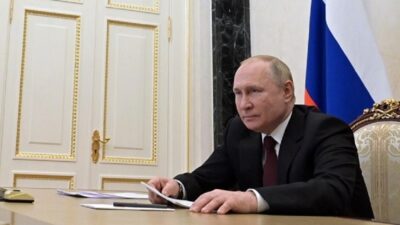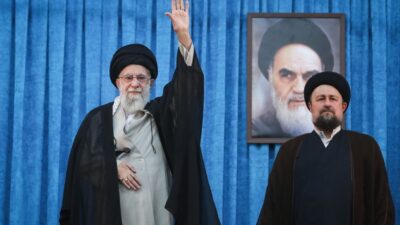Dimitris Deliolanis: Iliden, VMRO komitadjis and Mussolini
19/06/2020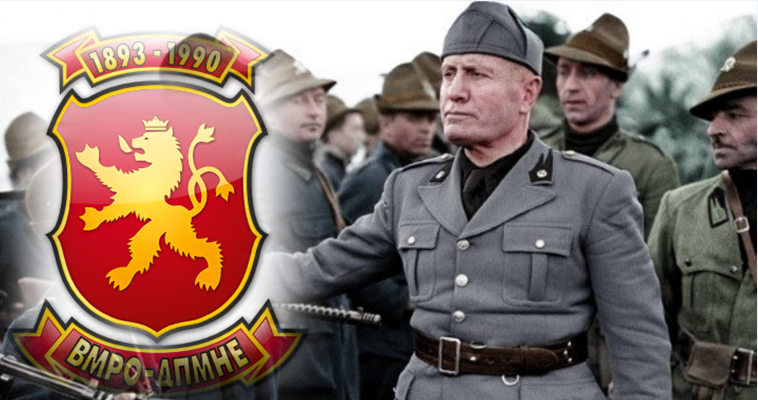
The modern VMRO (Internal Macedonian Revolutionary Organization) chooses not to want to remember. It keeps hidden its collaboration with fascist Italy. A collaboration that was by no means accidental, but rather active and long-lasting, as it lasted – almost uninterruptedly – from 1928 to 1944, when Tito’s partisans liberated Yugoslavia. Italy’s interest in developments in the Balkans dates back to the Balkan Wars.
The first diplomatic reports about the Slavic-Macedonian guerrillas – described by Greece as “komitatzis” – and VMRO date back to 1903, the day after the Ilinden uprising, on the feast day of the Prophet Elijah. Its brutal repression by the Ottoman gendarmerie gave the Great Powers the opportunity to intervene, sending “technocrats” and “experts” to modernize the Turkish corps. The Italian envoy, General de Giorgis, remained in Thessaloniki until 1911, when the Italians attacked Turkey and occupied Libya and the Dodecanese.
The next Italian official to come into close contact with VMRO was Alessandro de Bostari, an ambassador first to Sofia and then to Athens. The diplomat officially stated that during the Balkan Wars and the First World War, VMRO had formed a “Macedonian regiment” that fought in the ranks of the Bulgarian army.
New dimensions for Italy’s Balkan policies following WW I
After World War I, the Italian interest in the Balkans took on new dimensions: Italian claims to Dalmatia, home to a significant Italian minority, were not satisfied at the Paris Peace Summit. It also did not result in Italy’s insistence that Macedonia or the “Macedonian minority” be recognized as a new state within South Slavia, which is what Yugoslavia translates as.
On the contrary, the creation of the Kingdom of Serbs, Croats and Slovenes, which after a few years was renamed Southern Slavs, created additional problems for the Italians. They lost access to the royal house of Montenegro (a member of which was the Italian Queen Elena), and saw their efforts to control Albania at stake. Since that time, the persistent goal of Italian policy in the Balkans had been to isolate and dismember Yugoslavia.
Dismember Yugoslavia
This is exactly the policy pursued by Mussolini. From 1923, just one year after his appointment as Prime Minister, he began to closely monitor VMRO’s activities and financially support it. Meanwhile, the Slavic-Macedonian organization had taken on great proportions, as it had imposed its control on Pirin Macedonia and significantly influenced Bulgaria’s domestic politics.
VMRO leader General Protogerov and his right-hand man, Alexandrov, had managed to organize an army of about 9,000 irregulars (komitatzis), who crossed the border very easily to attack Serbian targets. According to official Yugoslav government figures, from 1919 to 1934, VMRO launched 467 attacks, killing 185 and injuring 253 Serb soldiers. These irregulars also killed 253 civilians.
The most striking attacks by VMRO on Yugoslav territory were the massacre of 30 Serb villagers in the village of Kandrifakovo in January 1923, the assassination of Spasoje Hadzippopovic, director of a Serbian newspaper in Bitola (Monastir) in 1926, and the assassination of general Mikhailo Kovachevich the following year. According to the same authorities, during the same period, the Yugoslav forces killed 128 Slavic-Macedonian guerrillas, wounded 13 and arrested 15,116.
Internal disputes within VMRO
Italian diplomatic sources also monitored the activities of VMRO in Greek Macedonia, but the exchange of populations had significantly reduced the number of pro-Bulgarian activists. Among Greece’s Slavic-Macedonians – Italian informants claim – the most powerful were the pro-Communists of the “VMRO Obedinena” (union), which was supported by the Balkan Communist Federation.
In the early 1920s, there emerged a “Macedonian Communist Party” led by Dimo Hadjidimov and an anarchist group led by Pavel Satev. Thus, the internal strife in VMRO signaled an alarm to the Bulgarian government, which in 1923 signed a cooperation agreement with Belgrade to fight the organization. VMRO responded with the assassination of the Bulgarian Defense Minister in June of the same year and with a coup in collaboration with a far-right conspiratorial organization of the army.
The Italians mobilize
The establishment of a far-right wing government in Sofia in favor of VMRO did not alleviate the organization’s internal strife. Alexandrov was assassinated by pro-communists in 1924, and in 1928 it was the turn of veteran Protogerov. The assassin of the second was his ambitious comrade Ivan Mikhailov. The fragmentation of VMRO and the civil war within the ranks of the komitatzis mobilized Mussolini, who asked the head of Italian counterintelligence for a full report on the situation.
At the same time, Foreign Minister Dino Granti hastened to suggest to the Duce that the fascist regime should not abandon Protogerov’s faction and invited his successor, Naum Tomalevsky, to Rome for talk . Despite opposition by Italian counterintelligence which suggested that the only effective militant organization belonged to Mikhailov, in August 1928 Tomalevsky was ushered into the Italian Foreign Ministry by Granti.
The Italian government has agreed to fund him with one million lire in installments – depending on the frequency and effectiveness of terrorist operations on Yugoslav soil. At the same time, Italy offered, for the first time, Italian-made armaments (Beretta pistols, rifles, explosives, and a few machine guns) as well as logistics bases: a base in Brindisi and two more in Albania, Durres and Tirana. The agreement was not implemented, as Tomalevsky failed to reorganize his supporters.
Alliance with a “tragically insane criminal”
In the spring of 1929, rival leader Mikhailov signed a co-operation agreement with another separatist movement funded by the Italians, Ande Pavelic’s Croatian Ustasi. The strong leader of Kosovo, Hassan Bey Pristina, hastened to join the agreement. The Italian secret services finally took matters into their own hands and contacted Mikhailov, ignoring the reports of diplomats who described him as a “tragically insane criminal”.
In 1930, Mikhailov, as the new leader of VMRO, assassinated Tomalevsky and instigated a failed coup in Sofia. In 1934, Mikhailov was approached by representatives of the Italian Fascist Party. More specifically, representatives of the CAUR (Roman Catholic Action Committees), the organization that promoted a kind of “fascist international” and which the Ustashas of Croatia had already joined. The two sides shared much in common in their ideology and policy, and the Italians pledged that the state monopoly would buy tobacco from the agricultural companies pointed out to them by Mikhailov.
VMRO’s dubious fascism
This ideological credulity of VMRO’s “fascist character” led the Italian government to include Croats and Slavic-Macedonians under the same Foreign Office bureau. The agency, in co-operation with Italian counterintelligence, set up three military training camps in central Italy. It also offered hospitality to Mikhailov and his associates in May 1934, when, after several coup attempts, the VMRO leader broke with the Bulgarian government.
This narrow approach could pose serious problems in Rome after the assassination of King George of Yugoslavia and French Foreign Minister Louis Bartholo on October 9, 1934 in Marseille, although the involvement of the fascist regime in this assassination has not yet been historically established. The perpetrator, Vlado Chernozemsky, was a VMRO fighter and collaborated with the Ustasi. He had gone to Marseilles via Italy.
Paris and Belgrade, however, preferred not to target Mussolini, while in the League of Nations they blamed Hungary as the terrorist traveled with a fake Hungarian passport. In any case, the fascist regime in Rome did not stop supporting the Croats and the Slavo-Macedonian terrorists. They simply restructured the camps in which they were being trained so as not to attract attention.
Strike at Greece
A few months before the invasion of Greece, the Italians called on Mikhailov to step up terrorist attacks on “Macedonia of the Aegean”, promising that the Axis would promote the creation of an “independent Macedonia”. An unfulfilled promise: after the German and Italian invasion of Yugoslavia in 1941, the Vardarska Bandovina region was divided: the southeastern provinces came under Bulgarian occupation, and the northwestern part was part of Greater Albania along with Kosovo, under Italian occupation.
Most of the VMRO officials collaborated with the Bulgarians. Some wanted to make clear their preference for the Axis, forming small organizations, essentially predatory gangs. Among them the most important was “Branik” (Defender). Only a small group, led by Dimitar Vlahov, was recruited by Tempo, Tito’s representative in the area.
Mikhailov remained throughout World War II in Croatia, where he worked closely with Pavelic and took part in the atrocities of Croatian fascists against Serbs, Jews and Gypsies.
In essence he was a “voevoda” (chieftain/plenipotentiary) of the exiled “Macedonian National Government” based in Vienna, but the Germans did not allow him to develop autonomous action. They also rejected the idea of establishing a “Macedonian Division” within the SS, following the example of Bosnian Muslims.
The Nazis allowed Mikhailov and his associates to return to Skopje in September 1944, when the Bulgarians withdrew from Yugoslav territory. The leader of VMRO tried to declare an independent state, recruiting old komitatzis and Nazi collaborators, which he equipped with German weapons, in order to resist Tito’s communist guerrillas. VMRO, however, was neutralized within a few weeks. Mikhailov and his closest associates took refuge in Zagreb. Their traces disappeared in the spring of 1945.
Mikhailov reappeared in 1948 in Rome. He had probably followed his friend Pavelic on his flight to hospitable Italy and the Vatican, passing from monastery to monastery. He died in the Italian capital in 1991. Nearly a decade later, Skopje’s new VMRO, as well as right-wing Bulgarian organizations, called on the Italian authorities to move the body of a favorite fascist collaborator to his hometown.

